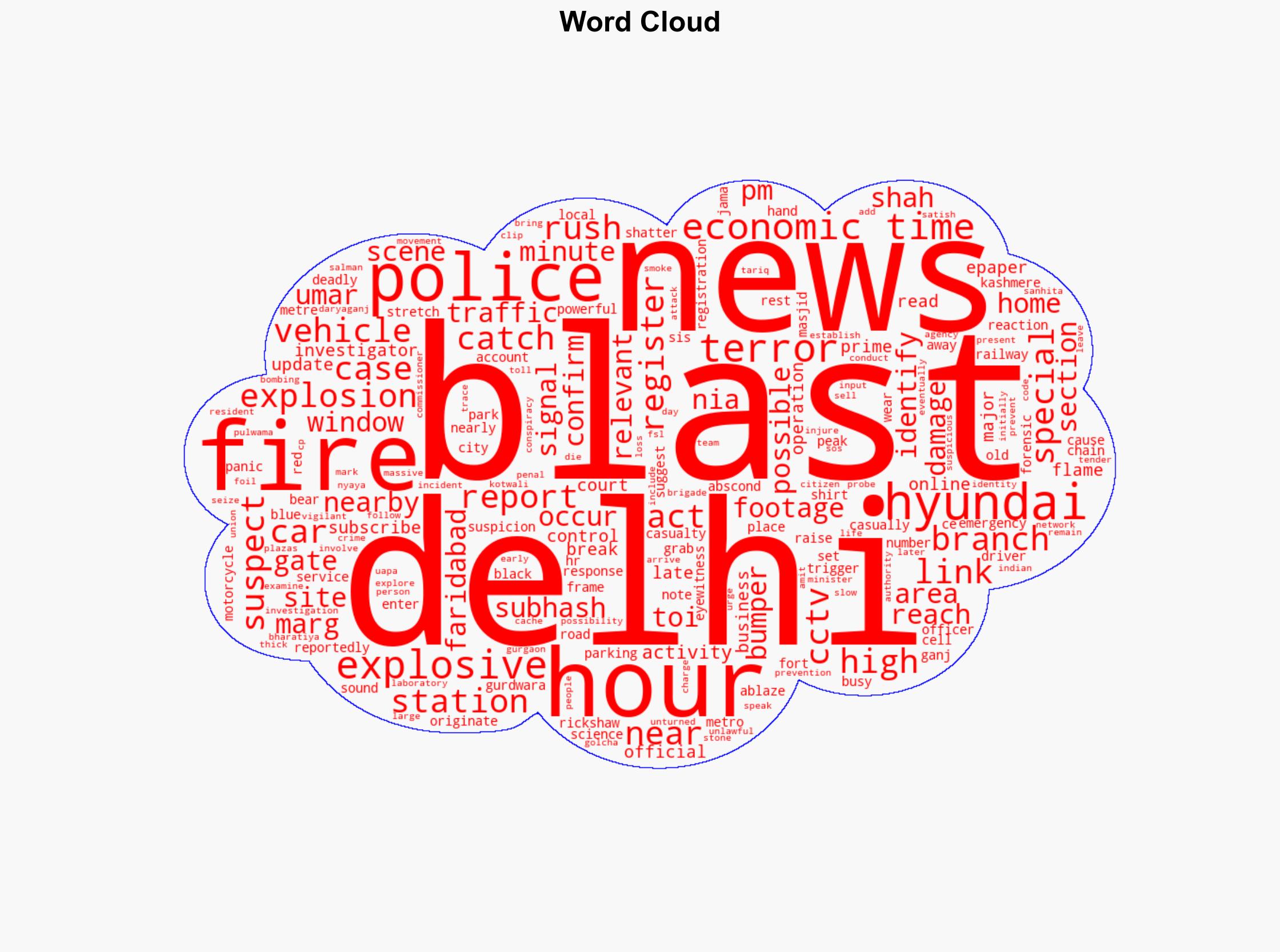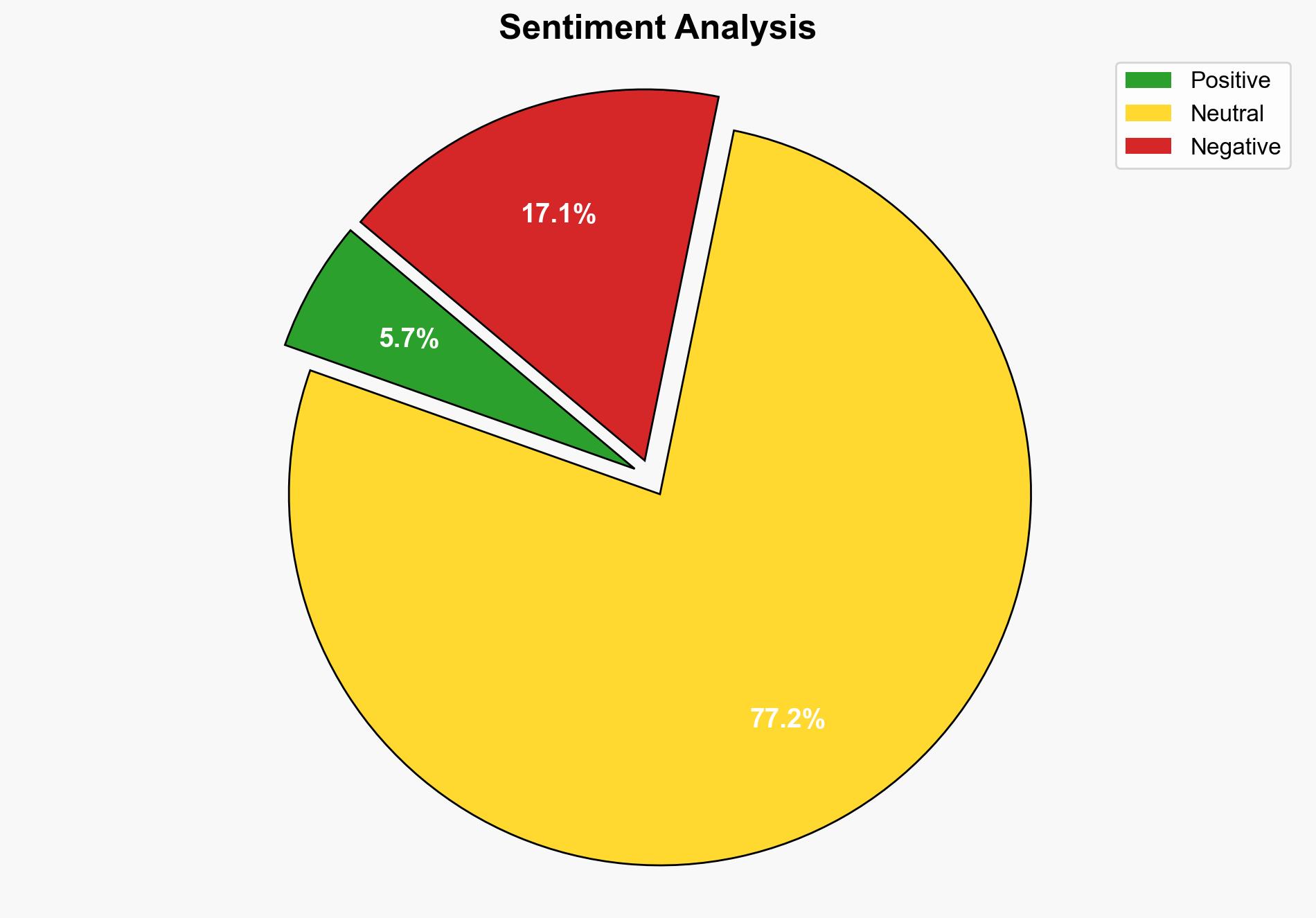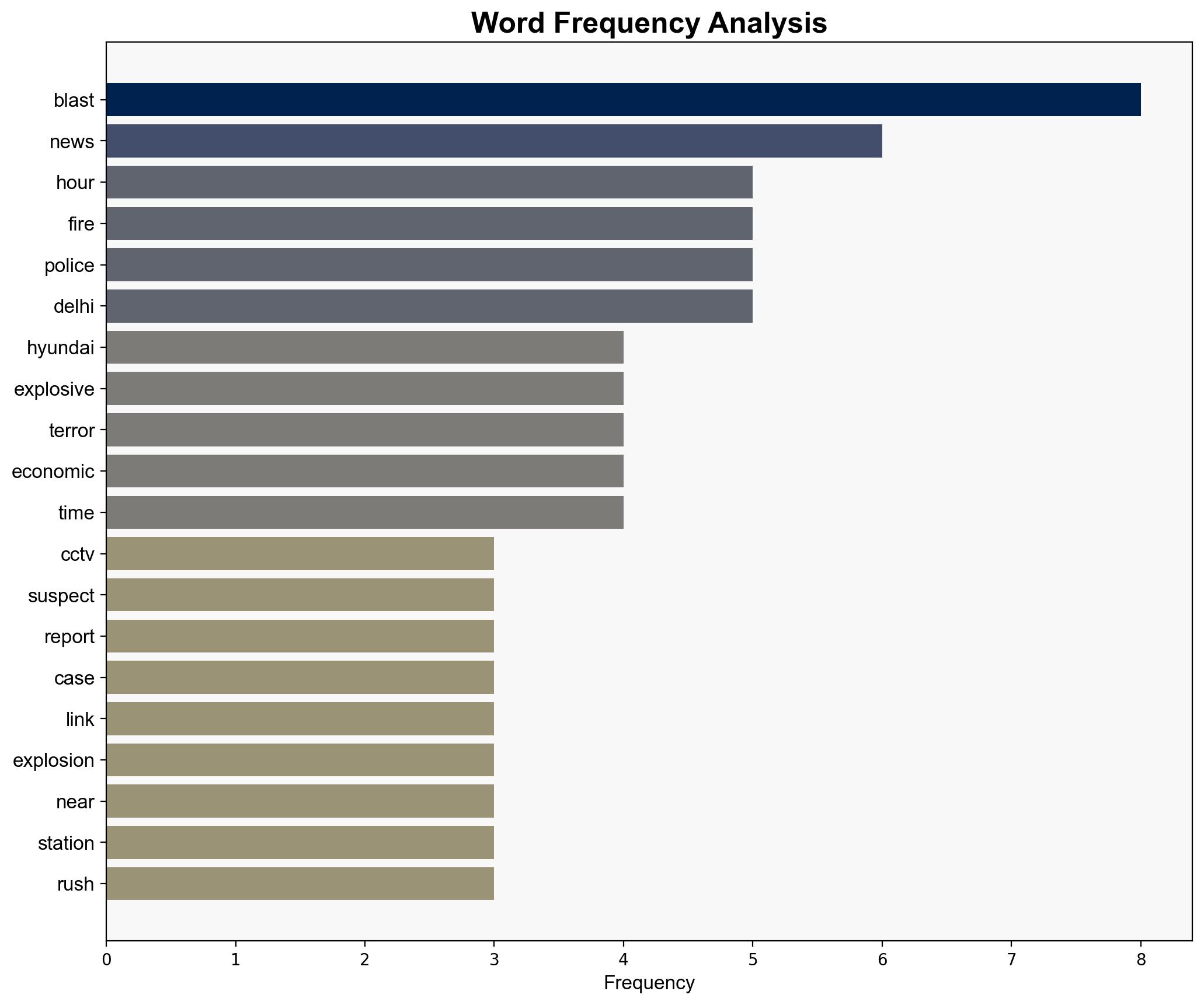Delhi Blast CCTV Video First image of suspect emerges Footage shows how man drove car into Red Fort area – The Times of India
Published on: 2025-11-11
AI-powered OSINT brief from verified open sources. Automated NLP signal extraction with human verification. See our Methodology and Why WorldWideWatchers.
Intelligence Report: Delhi Blast CCTV Video First image of suspect emerges Footage shows how man drove car into Red Fort area – The Times of India
1. BLUF (Bottom Line Up Front)
With a moderate confidence level, it is assessed that the Delhi blast is likely linked to a broader terror network, potentially connected to previous incidents in the region. The recommended action is to enhance intelligence sharing and coordination among national security agencies to prevent further attacks.
2. Competing Hypotheses
Hypothesis 1: The blast is part of a coordinated terror attack by a known extremist group aiming to destabilize the region and incite fear.
Hypothesis 2: The incident is an isolated act of violence by a lone actor with no direct ties to organized terror networks.
Hypothesis 1 is more likely due to the presence of a suspect with a history of involvement in explosive cases and the strategic location of the attack, which suggests planning and intent to cause maximum disruption.
3. Key Assumptions and Red Flags
Assumptions: The suspect, Umar, is linked to a broader network based on his previous involvement in explosive cases. The vehicle’s registration changes indicate an attempt to obscure ownership, suggesting premeditation.
Red Flags: The timing and location of the blast during peak hours at a major traffic hub raise concerns about the intent to maximize casualties and media attention.
Deception Indicators: The rapid sale and registration change of the vehicle could be an attempt to mislead investigators about the true ownership and origin of the plot.
4. Implications and Strategic Risks
The blast could lead to heightened communal tensions and security concerns in Delhi, potentially impacting political stability and economic activities. If linked to a larger network, there is a risk of further attacks, necessitating increased vigilance and security measures. Additionally, misinformation or panic could be spread through social media, exacerbating public fear.
5. Recommendations and Outlook
- Enhance surveillance and intelligence operations in key urban areas to detect and prevent potential threats.
- Strengthen collaboration between local law enforcement and national security agencies to ensure a coordinated response.
- Engage community leaders to promote vigilance and report suspicious activities to mitigate the risk of communal unrest.
- Best-case scenario: The suspect is apprehended quickly, and no further attacks occur, leading to a restoration of public confidence.
- Worst-case scenario: Additional coordinated attacks occur, leading to significant casualties and heightened national security threats.
- Most-likely scenario: Increased security measures and public vigilance prevent further immediate attacks, but the underlying threat remains.
6. Key Individuals and Entities
Umar (suspect), Salman (initial vehicle owner), Tariq (subsequent vehicle owner), Amit Shah (Union Home Minister), Satish Golcha (Delhi Police Commissioner).
7. Thematic Tags
National Security Threats
Structured Analytic Techniques Applied
- Cognitive Bias Stress Test: Expose and correct potential biases in assessments through red-teaming and structured challenge.
- Bayesian Scenario Modeling: Use probabilistic forecasting for conflict trajectories or escalation likelihood.
- Network Influence Mapping: Map influence relationships to assess actor impact.
Explore more:
National Security Threats Briefs ·
Daily Summary ·
Methodology





